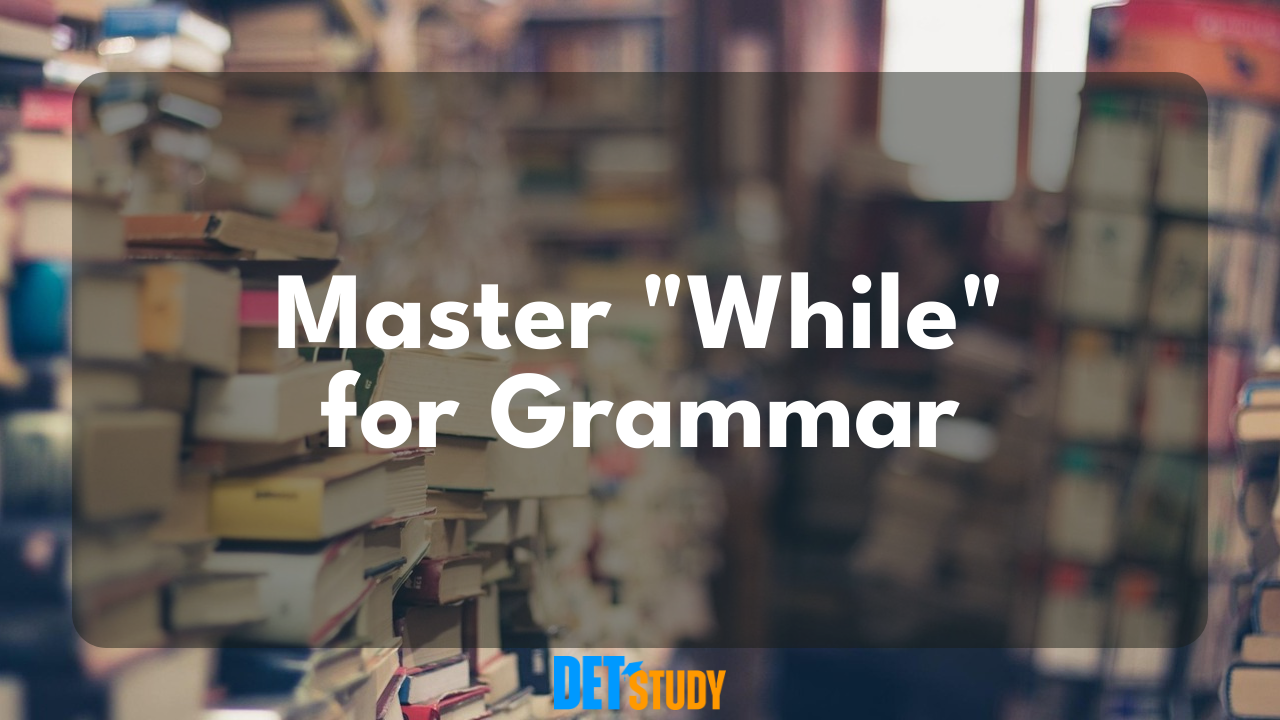Harnessing 'While' as a Conjunction for Stronger English Grammar

Understanding "While" as a Conjunction
In English, "while" is a crucial conjunction that links ideas and highlights simultaneous actions or contrasts. Mastering its use will greatly improve your writing and speaking skills. 🚀
1. Indicating Simultaneous Actions
"While" primarily shows that two actions happen at the same time, indicating parallel events. Both actions often occur during the same period.
- Example: "She was reading a book while eating breakfast."
-
Here, "while" connects reading and eating as concurrent actions.
-
Example: "While studying, he listened to music."
- This shows studying and listening happening together.
Actions linked by "while" can use various tenses, such as present continuous ("I’m cooking while she finishes"), past continuous ("We were driving while the sun was rising"), or future tenses. Ensure both actions are logically connected and can feasibly occur simultaneously.
2. Showing Contrast
"While" also contrasts two different ideas or situations, emphasizing their differences. 🤔
- Example: "John loves hiking, while Mary prefers swimming."
-
This highlights their differing preferences.
-
Example: "While some people enjoy spicy food, others find it too hot."
- "While" contrasts opinions on spicy food.
3. Emphasizing Attitude or Concession
Sometimes, "while" introduces a clause showing an attitude or concession, implying something occurs despite other conditions.
- Example: "While I understand your concern, I still believe we should proceed."
-
This shows a different belief despite understanding a concern.
Differences Between "While" and "During"
Both "while" and "during" relate to time, but they have distinct grammatical roles. Understanding these differences improves language precision. 🎯
"While" as a Conjunction
"While" links two clauses, often with verbs, to show simultaneous actions or introduce a contrast. It connects complete thoughts.
- Example: "She was singing while he played the piano."
- Example: "While the old system worked, the new one is more efficient."
"During" as a Preposition
"During" is a preposition, followed by a noun or noun phrase, specifying *when* something occurs within a time period or event. It focuses on the timing of an action within a broader context.
- Example: "I read several books during the summer."
- Example: "There was a lot of rain during the festival."
Key Differences Summarized:
-
Function: "While" connects clauses (actions/ideas); "during" precedes a noun (time/event).
-
Structure: Use "while" with clauses ("Jack called while he was driving."); use "during" with a noun ("Jack called during his drive.").
Common Mistakes with "While" & Tips
Avoid these common errors to use "while" effectively. ✨
1. Incorrect Tense Usage
Ensure tenses in both clauses logically reflect simultaneous actions.
- Incorrect: "She sings while she was cooking."
- Correct: "She sings while she is cooking."

2. Ambiguous Comparisons
Use "while" for logically related actions or contrasting ideas.
- Incorrect: "While I like coffee, the cat is playing outside."
- Correct: "While I like coffee, I chose to drink tea this morning."
3. Misplaced Commas
When "while" starts a sentence, use a comma after the first clause. No comma is needed when "while" is in the middle.
- Starting with "While": "While the sun was setting, we walked along the beach."
- In the middle: "We walked along the beach while the sun was setting."
4. Overusing "While"
Vary sentence structure to avoid repetition. Consider alternatives like "although" or restructuring sentences.
- Instead of: "While I enjoy music while I work..."
- Try: "Although I enjoy music while I work..."
5. Confusing "While" with "During"
Remember, "while" connects clauses, and "during" precedes a noun.
- Incorrect: "While the meeting, it started to rain."
- Correct: "During the meeting, it started to rain."
By practicing these rules, you can make your English communication clearer and more nuanced. Experiment with "while" in different contexts to enhance your fluency!
DET Study provides an extensive suite of over 15,000 practice questions, focusing on leveraging adjectives and adverbs to fortify your grammatical skills. Regular practice with these targeted materials ensures that you approach the Duolingo English Test with enhanced confidence and precision, ready to achieve your desired scores.
🎯 Need more practice? Check out DETStudy.com for expert resources, 15,000+ practice questions, and AI-powered writing and speaking feedback.

